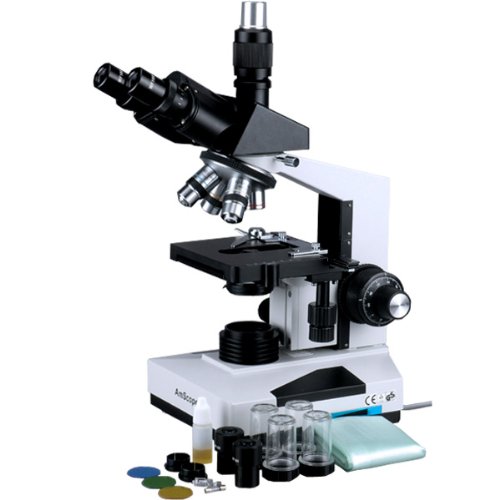Light microscopes or thoughprovoking field microscopes are the most basic form of microscopes. The primary light microscope was invented way back in the 16th century. They are so called because they use light in the illustrated spectrum to illuminate the specimen. Light microscopes are extensively used everywhere from high-tech laboratories to schools.
There are many types of light microscopes ready from just to 00 or even more. The major types of light microscopes are stereo or dissecting, easy and composition microscopes. Stereo microscopes are the most advanced and use two light paths for three-dimensional (3D) viewing. They are very costly and are used in laboratories and medicinal practices. easy light microscopes are used only for small scale magnification and they have only one lens both as eyepiece and objective.
Microscope
Compound microscopes are the most extensively used light microscopes. There are generally three grades of composition microscopes - student, benchtop and investigate light microscopes. Pupil microscopes are cheap, small and designed for thoughprovoking field, dark field, and phase disagreement examinations. Benchtop microscopes are used for test techniques. investigate microscopes are for investigate practices; they often contain built-in computers and cameras.
The components of a tasteless composition microscope are: a mirror or light source for reflecting or producing light, a condenser with diaphragms and filters to adjust the intensity of the light, a stage for supporting the specimen which contains a central hole to pass the light on to the specimen, changeable objective lens for focusing the image for the eyepiece, fixed eyepiece or ocular for focusing the image for the eye, screws known as adjustments (coarse adjustment and fine adjustment) are used to bring the specimen in to focus, and a framework to which all these parts are attached. The power of the microscope depends on the power of the objective and eyepiece.
If you intend to buy a light microscope, go to expert microscope suppliers, because only they can give you satisfying after-purchase services. The Internet also provides information about some popular suppliers. Often Internet sites offer you best deals and services.
Light MicroscopesRecommend : Pneumatics and Plumbing Good choice The Fasteners Sonic Screwdriver Tool


















